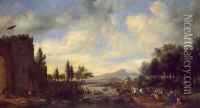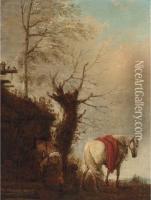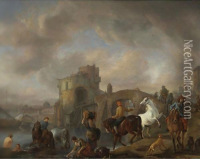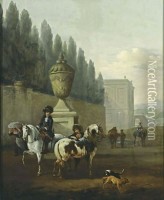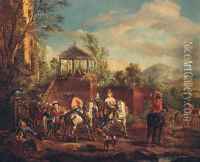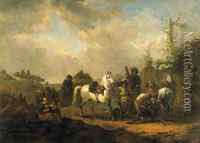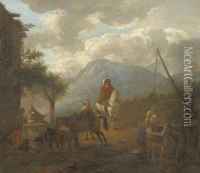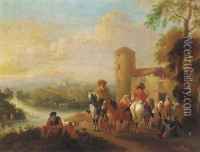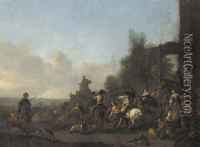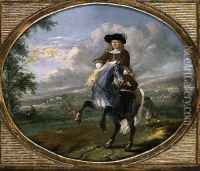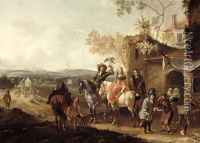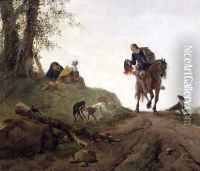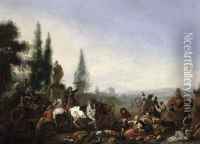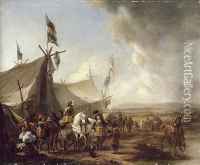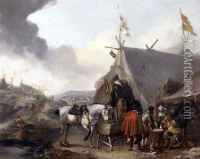Pieter Wouwermans or Wouwerman Paintings
Philips Wouwerman, often misspelled as Pieter Wouwermans or Wouwerman, was a Dutch painter of the Baroque era. Born in Haarlem, Netherlands, on May 24, 1629, into an artistic family, his father, Pouwels Joostensz Wouwerman, was a painter as well. Philips had two younger brothers, Pieter and Jan, who also became painters, but he was the most prominent among them.
Wouwerman initially trained with his father and later became a pupil of the landscape painter Jan Wynants. His early works were influenced by Pieter van Laer, a Dutch painter who had spent time in Rome and whose works were characterized by scenes of everyday life, often involving horses and stables. This influence was pivotal as Wouwerman would become renowned for his own depictions of horses and cavalry scenes.
In 1642, he joined the Haarlem Guild of St. Luke, which marked the beginning of his professional career. Wouwerman's work quickly gained popularity, and he became one of the most successful Dutch painters of the 17th century. His paintings were sought after by collectors throughout Europe, and his success allowed him to live comfortably.
Wouwerman's oeuvre is extensive, with over 600 paintings attributed to him. His subject matter was diverse, including battle scenes, Italianate landscapes, hunting parties, and elegant genre scenes. He had a talent for capturing the dynamic movement of horses and their riders, which became a hallmark of his work. His landscapes often featured a harmonious blend of figures, animals, and nature, executed with a light, luminous palette.
Despite his productivity and success, Wouwerman's life was relatively short. He died on May 19, 1668, in Haarlem, just days before his 39th birthday. His works continued to be highly prized after his death, and his influence persisted, particularly in the 18th and early 19th centuries, when his paintings were often imitated and forged, attesting to the enduring appeal of his artistry.
